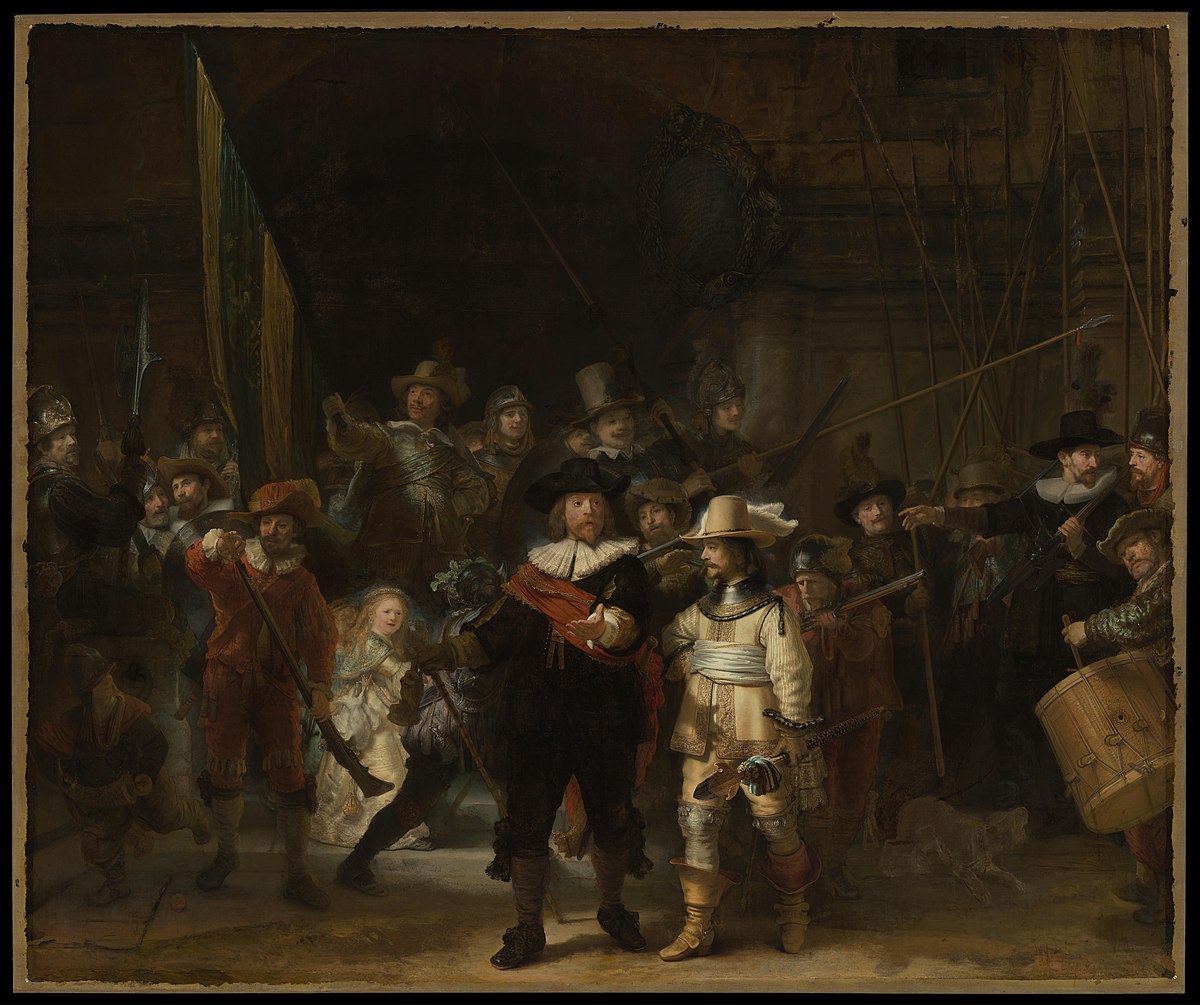Feature image: Rembrandt, The Blinding of Samson, 1636 via Wikipedia/Public Domain
Shadow, City, and Self: Why Rembrandt Still Feels So Human
In a quiet room of the Rijksmuseum, surrounded by tourists speaking in hushed awe, you might find yourself face to face with a painting that looks back. The eyes are soft, swollen slightly with age. The gaze isn’t confrontational, but it is knowing. The man in the frame is Rembrandt van Rijn, and somehow, after nearly 400 years, he still feels heartbreakingly familiar.
This June, as I prepare for a trip to Amsterdam, Rembrandt is at the forefront of my mind. Not just because he is the city’s most famous artistic son, but because few painters ever captured what it means to be human quite like he did. His art is technically brilliant, emotionally raw, spiritually searching, and intimately honest. Let’s examine Rembrandt’s humanity through his self-portraits, his beloved Amsterdam, his mastery of light and shadow, and his deeply moving biblical scenes.

Rembrandt in the Mirror: The Most Honest Self-Portraits in Art History
Rembrandt painted himself at least 80 times across his career, a staggering number for any artist. But these weren’t just exercises in vanity. If anything, they were studies in vulnerability. He painted himself as a young man with confident swagger, then again in middle age, furrowed and tired. In his final years, he painted himself weathered, flesh sagging, eyes heavy with grief.
Unlike many of his contemporaries, he didn’t idealize himself. In Self-Portrait with Two Circles, one of his most iconic works, Rembrandt appears almost ghostly. His white shirt glows like a fading light, and his face seems to blend with the background, part of the air itself. There’s strength in his stance, but also uncertainty.

These portraits are, in a sense, a journal. He used his own face as a way to measure time and truth. He aged, he lost his fortune, he buried his wife and children, and he kept painting, recording not just what he saw, but what he felt.
City of Light and Loss: Rembrandt’s Amsterdam
It’s impossible to separate Rembrandt from Amsterdam. The city was the backdrop to his greatest achievements and deepest losses. He lived in a grand home on Jodenbreestraat, now preserved as the Rembrandt House Museum. There, he ran a bustling studio, trained pupils, and created some of his most ambitious works.

But Amsterdam was also where his life unraveled. He went bankrupt, moved to a more modest house, and watched the art market shift away from his style. Despite this, he kept painting. Works like The Syndics of the Drapers' Guild and The Jewish Bride show an artist still deeply engaged with life, quiet, observant, and dignified.

Amsterdam’s golden light, its diversity, and its theater of everyday life seep into his work. You can feel the city’s texture in his paintings: not just in the grand portraits, but in the way he painted beggars, old women, children, and strangers with the same reverence he gave kings.
Chiaroscuro and Compassion
Rembrandt was a master of chiaroscuro, the dramatic contrast between light and dark. But he used it differently than Caravaggio, whose figures feel theatrical. Rembrandt's shadows are softer, more introspective. His light doesn’t spotlight; it reveals.
In The Return of the Prodigal Son, light spills onto the back of a kneeling boy, his head pressed into his father’s chest. The gesture is wordless but overwhelming. The shadows around them hold silence, as if the whole world has paused for this reunion. Rembrandt’s light is a spiritual force. It enters quietly and lingers.

This sensitivity to shadow gives his work an inner life. In The Jewish Bride, the tenderness between the couple glows from the canvas. His use of texture, thick, rough, and radiant, makes the figures feel warm and present, like memories rendered in oil.
The Bible, But Make It Human
Though Rembrandt painted numerous biblical scenes, he didn’t approach them with grandeur or dogma. His religious works are emotional, psychological, and deeply personal. He saw these stories not as myths, but as human dramas.
In Bathsheba at Her Bath, we don’t see a seductress, but a woman caught in a moment of reflection, holding a letter that changes her fate. Her body is real, soft, and vulnerable. In The Blinding of Samson, the violence is chaotic and terrifying, but rendered with such physical detail that it’s impossible to look away.

He painted these moments not to teach morality but to ask questions: What does forgiveness look like? How do we survive grief? What does love cost?
The Legacy in Every Brushstroke
Rembrandt’s impact on art history is enormous. His work shaped the way generations of artists approached realism, emotion, and human complexity. From Van Gogh’s raw vulnerability to Lucian Freud’s textured intensity, echoes of Rembrandt persist across centuries. Even in photography and film, his lighting techniques are studied and emulated.
And yet, his legacy is about both influence and intimacy. There’s something deeply personal about standing before one of his paintings, whether it’s a biblical scene or a tired self-portrait, and feeling, for a moment, that someone centuries ago understood you.

There’s a reason we still return to Rembrandt. He saw people clearly, himself included, and never turned away. His eyes, painted over and over, always seem to find ours in return. As I walk through Amsterdam next week, I plan to stand in front of The Night Watch and sit for a while in his old studio. Not just to admire the genius of his work, but to feel its quiet company. Rembrandt still speaks softly, powerfully, and without needing to say a word.
©ArtRKL® LLC 2021-2025. All rights reserved. This material may not be published, broadcast, rewritten or redistributed. ArtRKL® and its underscore design indicate trademarks of ArtRKL® LLC and its subsidiaries.





